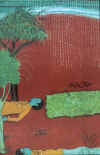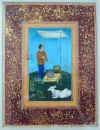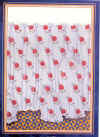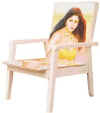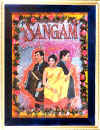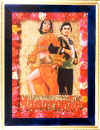| the-south-asian.com JANUARY 2002 | ||
| about us contact us data bank past issues the craft shop the print gallery | ||
|
JANUARY 2002 Contents Literature Pakistani
Literature Visual Arts South
Asian Art -
shared Rare
photographs of Indian Outlook Technology India
& China - major global Foreign
Investors in India's People Sports Books 'Knock
at Every Alien Door' Society
Books
|
Page 1 of 2
South Asian Art - negotiating a shared cultural frontier. by Niilofur Farrukh From the genetic debris of Modernism, a new art is in gestation. As the stem cells of the schools of Modern Art find themselves grafted more freely to hospitable indigenous cultures, the resultant possibilities can only be immense. Free from dogmatic hierarchies and energized by innovation and diversity, art appears to be gravitating to traditional reservoirs of craft and belief practices in South Asia. Here these are often assimilated as a hybridized vehicle of contemporary concerns and in the process tradition acquires a new context and a new lease for life. This re-entry of the conventional through the door of the unconventional maps the negotiated position of the inherited in art, after Modernism’s patriarchal rupture. The cyclic journey of South Asian art in the last five decades has been truly an ironic one. In 1947, the so-called moribund artistic legacy had to be forsaken for the dynamic new philosophies with the promise of universal modernity. Today a reversal is called of this nihilism as the art ‘on the cutting edge’ is often about the discovery of possibilities within the vernacular.
In Pakistan, Neo- Miniature has become the symbol of a formalistic and conceptual transformation as it appropriates history with the same vigor as it rejects the purist mode that is central to this genre. In the hands of its new exponents like Imran Qureshi, Ayesha Khalid, Nusra Latif and their peers, the Neo- miniature has embraced political satire, lyrical romance and social protest. Even its traditional decorative and documentary role, has been cleverly subverted. While this radical change in miniature painting is limited to Pakistan, the use of kitch in art seems to have found currency all over the region. If one was to judge from the show " Kitsch Kitsch Hota Hai " hosted by New Delhi’s Espace gallery held in mid 2001, it seems that even senior artists like Anjoli Ela Menon among others, see kitsch as a stylistic hiatus from their established genre. Baba Anand, A fashion designer turned painter, from the other end of the spectrum ‘kitsched-up’ posters of yester year film hits with trimmings from the rag trade. Anjoli Ela Memon’s contribution to the show was a series of life size chairs. Each painted with seated figures of regional icons. Mr Vajpayee and uniformed Gen Musharraf rubbed shoulders with Hrithik Roshan. The clever use of kitsch has also been seen to help lighten up the dark mood of art so prevalent in the region. Another well- known gallery was planning a show of bric- a- brac painted by well known artists in keeping with the festive spirit and to suit the budget of the casual buyer in New Delhi this winter. Spanning two similar practices, the Bloomsbury and the South Asian applied arts, the participating artist seemed confident that these transgressions will not undermine the seriousness of their oeuvre. Also with the lowering of artificial barriers between craft and art, this kind of creative expression is finding a legitimate space in the gallery. This may also have something to do with the higher level of aesthetic awareness in interior design that may have spawned a demand for such ‘conversation pieces’. As the art is unchained from the two –dimensional surface it does not always finds itself using such domesticated material. In Sri-Lanka, some artists have turned rubber tires and metal drums into their ‘canvas’. The very tools of death and repression are subverted into a medium of protest and material for creative eloquence.
Copyright © 2000 - 2001 [the-south-asian.com]. Intellectual Property. All rights reserved. |
|
